This week, we catch up with the action from this year's Cambridge Science Festival. We find out what you could learn from a plasticine brain and how your next holiday could be literally out-of-this-world! We explore the science of Dr who's Sonic Screwdrivers, Spiderman and Skateboarders and find out how long the festival takes to prepare. Plus, how meteorite strikes benefit life on Earth, get a step closer to a cure for one of the most common forms of blindness and find out why chimps on TV could be harming their cousins in the wild. All this, and in Kitchen Science we show you how to make a Vacuum machine powered bazooka!
In this episode
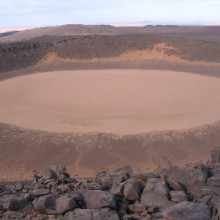
Making a positive impact
Many people assume that meteors hitting our planet can only spell disaster for living creatures. For example, we've all heard about the massive meteor strike 65 million years ago that is widely believed to have done for the dinosaurs.
But scientists at the Natural History Museum of Denmark are now suggesting that in fact the opposite may be true, and that meteor strikes may in fact be beneficial for biodiversity and animal life.
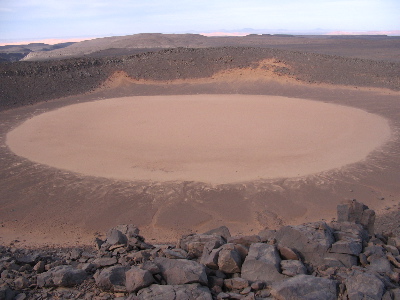 Palaeontologists Svend Stouge and Dave Harper have been studying the so-called Ordovician period around 490-440 million years ago, a time when the earth was battered by more than 100 massive meteorites at one time. Surprisingly, the researchers found that after an initial negative impact on life, new and more varied species evolved in the oceans, which at that time were home to virtually all life on Earth. The researchers believe that the strikes gave evolution a serious boost in a relatively short period of time
Palaeontologists Svend Stouge and Dave Harper have been studying the so-called Ordovician period around 490-440 million years ago, a time when the earth was battered by more than 100 massive meteorites at one time. Surprisingly, the researchers found that after an initial negative impact on life, new and more varied species evolved in the oceans, which at that time were home to virtually all life on Earth. The researchers believe that the strikes gave evolution a serious boost in a relatively short period of time
Writing in the journal nature Geoscience, the researchers were studying meteorite craters in Sweden, such as the large Lockne crater, with a diameter of 7.5 km. Although at the moment their findings only apply to the region around the Baltic sea, the scientists say they have now found meteorites in southern China with the same chemical composition as those they studied in Sweden.
The team now plan to study craters and meteorites in China and the USA to find out whether the positive benefits of meteor strikes are a global phenomenon, which could have exciting implications for the entire history of evolution.
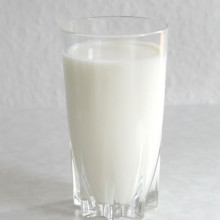
Stopping Spoiled Food at the Checkout
Have you ever bought milk, only to discover it's gone off by the time you get home? A new device could stop spoiled food ever leaving the supermarket!
 If food is not properly refrigerated, the amount of bacteria present will increase. This could mean that the food will 'go off' earlier and be wasted, or in the case of Staphylococcus aureus this could mean a bout of food poisoning. Craig Grimes at Pennsylvania State University and Qingyun Cai at Hunan University have developed a novel device which can let you know if a sealed food packet contains this harmful bacteria. By attaching it to a 'widget' they hope that infected milk would never make it off the shelves.
If food is not properly refrigerated, the amount of bacteria present will increase. This could mean that the food will 'go off' earlier and be wasted, or in the case of Staphylococcus aureus this could mean a bout of food poisoning. Craig Grimes at Pennsylvania State University and Qingyun Cai at Hunan University have developed a novel device which can let you know if a sealed food packet contains this harmful bacteria. By attaching it to a 'widget' they hope that infected milk would never make it off the shelves.
The active part of the widget consists of a strip of iron, nickel, molybdenum and boron alloy. This will vibrate in a magnetic field, and the vibrations create a distinctive magnetic field of their own. In fresh, non-infected, milk the strip is only able to vibrate slowly, but as S. aureus causes milk to decompose, the strip is able to vibrate faster. By experimenting with the speed of vibration in different foods, they hope to develop a test for infection in soups and juices.
Simple detectors containing an electromagnet and a sensor could be put at checkouts and would detect the vibration of the strip, allowing potentially poisonous food to be caught before it leaves the shop!
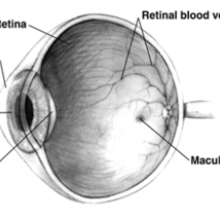
Robo-treatment for blindness
Researchers at the University of Utah School of Medicine have mad a discovery that could lead to treatments for two of the leading causes of blindness - age-related macular degeneration and diabetic retinopathy. Age-related macular degeneration is the most common cause of blindness in people age 65 or older and is expected to rise as our population gets older. And diabetic retinopathy is the most common cause of blindness in working-age people, and is also on the rise as the number of people with diabetes goes up. These diseases cause problems by making blood vessels grow abnormally in the eye - and these new blood vessels are often weak and leaky.
 The team found that eye damage caused by both diseases could be prevented and even reversed by switching on a protein called Robo-4, which has been implicated in angiogenesis - the process by which the body grows new blood vessels. Previous research has shown that Robo-4 can stop the growth of new blood vessels and stabilise them, preventing uncontrolled blood vessel growth. In experiments with mice, the scientists found that activating Robo-4 could block abnormal blood vessel growth and stabilise blood vessels to prevent leakage, helping to prevent or improve the symptoms of age-related macular degeneration and diabetic retinopathy.
The team found that eye damage caused by both diseases could be prevented and even reversed by switching on a protein called Robo-4, which has been implicated in angiogenesis - the process by which the body grows new blood vessels. Previous research has shown that Robo-4 can stop the growth of new blood vessels and stabilise them, preventing uncontrolled blood vessel growth. In experiments with mice, the scientists found that activating Robo-4 could block abnormal blood vessel growth and stabilise blood vessels to prevent leakage, helping to prevent or improve the symptoms of age-related macular degeneration and diabetic retinopathy.
This discovery could pave the way for treatments that switch on Robo-4, which could be potentially powerful treatments for blindness caused by these diseases. The research could also have bigger implications. For example, serious infections such as SARS kill people when an infection destabilizes blood vessels, allowing fluid to leak into the lungs. Could activating Robo-4 help to stop this? And in cancer, tumours hijack blood vessels to provide them with nutrients and oxygen - so could there be some role for Robo-4 activating drugs here too?
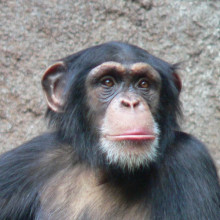
08:41 - He may drink tea, but that doesn't make him common
He may drink tea, but that doesn't make him common
Seeing Chimpanzees on TV and in adverts could be misleading the public into thinking chimps are thriving, when the reality is very different.
For 45 years, chimps could be seen advertising tea, and more recently have been advertising beer, careers advice and even in a promotional campaign by the American Association for the Advancement of Science (who halted the campaign when they were made aware of the objections). "The inappropriate portrayal of great apes in advertisements undermines the scientific, welfare and conservation goals that we and many readers work hard to achieve" said Stephen Ross and colleagues, including well known primate researcher Jane Goodall, writing in Policy Forum in this week's Science magazine.
Visitors to two primate centres, the Regenstein Centre for African Apes at the Lincoln Park Zoo and the Great Ape Trust of Iowa, were asked to complete a survey about their attitudes towards apes. Although 95% and 91%of respondents thought gorillas and orang-utans respectively are endangered, only 66% recognised that chimpanzees are officially endangered. In a follow up survey, when asked to explain their choice, 33% of respondents stated that "chimpanzees were commonly seen on television, advertisements and movies and, therefore,must not be in jeopardy."
The sad reality is that Chimpanzees are endangered in the wild, with current estimates suggesting that wild populations could be extinct in the next several decades.
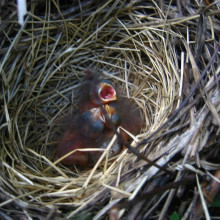
10:44 - First Laid Eggs
First Laid Eggs
with Dr Keith Sockman, University of North Carolina, Chapel Hill
For years, scientists have assumed that the first born of any batch of offspring have a better chance of survival out in the wild, although this may not necessarily be true in humans. This does apply to birds, and it seemed that the first laid egg might do better than it's siblings. However, Dr Keith Sockman, from the University of North Carolina at Chapel Hill, has found out that although this seems to be true, the first laid egg actually has a harder time in getting to hatch in the first place...
Kat - Tell us a bit about what you've been looking at, what sort of birds have you been studying?
Keith - The birds I study are called Lincoln's Sparrows, and I study them in a high elevation site in the rocky mountains of Colorado.
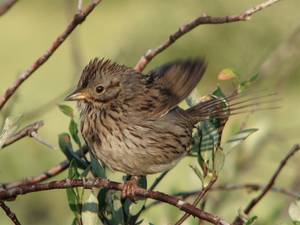 Kat - How does their life cycle work? If a female bird is going to lay some eggs and hatch them, what does she get up to?
Kat - How does their life cycle work? If a female bird is going to lay some eggs and hatch them, what does she get up to?
Keith - Well, as in most bird species, the female will lay one egg per day until the clutch is complete at usually 4 eggs, but sometimes three or five. And then during that laying period, usually a few days into it, she will begin incubating those eggs. Incubation will progress for typically 12 days or so, at which point they'll hatch and she'll raise those young for another 10 days or so before they are big enough to fledge, that is to leave the nest and gradually gain independence.
Kat - So we've got eggs being laid every single day, so some are older than others. What did you find when you were studying these eggs?
Keith - Everybody is familiar with the concept of the runt of the litter or the runt of the brood, as you already alluded to. From mammals to even beetles, and especially in birds, the youngest sibling in a group of siblings, or nestlings in the case of a group of birds, is typically the smallest because it's the youngest, and therefore the least competitive in that nest and the least likely to survive, whereas the oldest is typically the largest and the most likely to survive. But what I found in the Lincoln's sparrow is that although, indeed the oldest is typically the biggest and most likely to survive the competition between it's sibling nestlings for food, it is actually the first produced young, that is the oldest, that is least likely to hatch from the egg at all. So there seems to be this trade-off that's mediated by this effect of production order or ovulation order, that in one case maximises the survival probability of the nestling, but at the same time minimises the survival probability of the embryo.
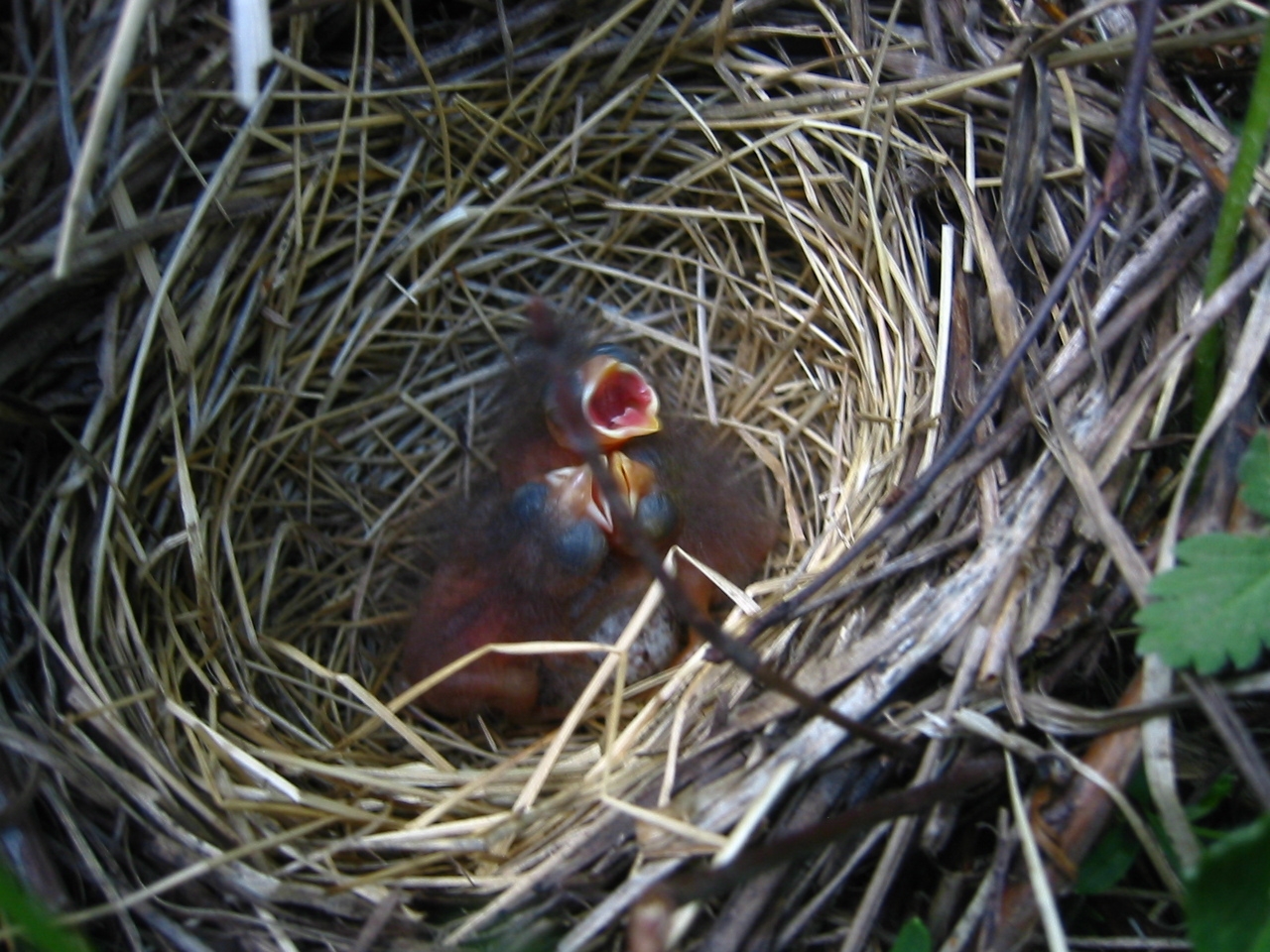 Kat - So you have the older eggs which may not hatch at all. Why do you think this happens?
Kat - So you have the older eggs which may not hatch at all. Why do you think this happens?
Keith - Well, my hypothesis is that it relates to the fact that I mentioned earlier and that is that the female does not begin incubating those eggs right from the start. So that first laid egg will typically sit in the nest for a few days, often, before she begins incubation in earnest. As a consequence, that egg is exposed to ambient temperatures. During that time it can accumulate harmful bacteria and fungi that can penetrate the shell, we presume, and compromise the viability of the embryo.
Kat - So presumably you're going to end up with fewer eggs hatching, but they're more of the same age?
Keith - Well, we think that this behaviour of the females, which is to start incubating after... not right away in other words, kind of balances a series of trade-offs she faces. One being how many eggs can she lay before the probability that one is exposed to ambient temperatures for to long and therefore it's survival being compromised.
Kat - So it's swings and roundabouts?
Keith - Yes!
Kat - Do you think this is happening with any other bird species out there?
Keith - I would certainly think so. I think this hasn't been looked at too closely so we're not really sure how widespread it is, but I have no reason to think that the Lincoln's sparrows that I study are very much different at all from many other small songbirds.
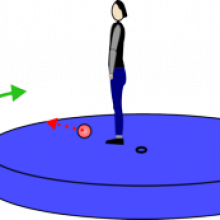
Why does spinning make you feel sick?
Kat: I think this is all to do with the vestibular system, if that's the right word. I'm sure Chris will pick me up on this from Australia if I'm wrong.
Basically, inside your ears you have a system of interconnecting tubes that are all at right-angles to each other. In each plane: up down, left and right that are filled with fluid. They tell you which way is up and which way is left and right in your head so you know if you're standing up or lying down.
If you spin very fast the fluid in these canals will spin round. If you stop very suddenly, as in stopping an office chair, you stop but the fluid in your ears is still going. Your brain gets all confused. You think you're still spinning but your eyes are telling you that you're not spinning so it manifests as feeling very sick.
Ben: Isn't this why people feel sick in long car journeys at all?
Kat: Exactly, it's when you get an imbalance between what your ears are telling your brain and what your eyes are telling your brain. You get confused and that makes you feel nauseous.
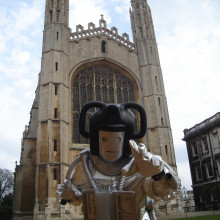
17:43 - Organising the Cambridge Science Festival
Organising the Cambridge Science Festival
with Nicola Buckley, Cambridge Science Festival
Ben - From the Cambridge Science Festival, we've got Nicky Buckley with us. Hello!
Nicky - Hello.
Ben - It's been an extremely busy weekend for you. I was at the festival yesterday covering some of the events but there was so much to see there it would have taken an army of us to get round it all. How long does it take to set up something like this?
Nicky - We think about it all year. It does take 12 months to plan each festival. When it gets to the week or two beforehand we're working really long hours just to get it all sorted. It's fantastic when it all comes together.
Ben - We'll be finding out what Carol Vorderman's personal favourite bits were but what's been your highlight so far? I know we've still got a few things to come but so far what have been your best bits?
Nicky - I really enjoyed Bjorn the polar bear yesterday who came to visit us as part of National Science Week. He's a life-size animatronically-controlled polar bear. His handler does a show about why polar bears are under threat from global warming and their habitats are disappearing. The children asked fantastic questions and they came up with great answers as to why they could actually have an impact on tackling global warming. They were thinking about putting a jumper on in the house instead of turning the heating up so I was really pleased with that.
Ben - It seems that there was quite a lot there that did both inspire the kids but also, I think, terrify them because I know that there were some fairly scary monsters around as well.
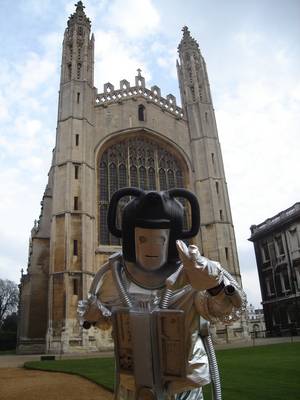 Nicky - That's right. There were some Dr Who monsters, some Oods. I don't know all the words for them actually but I didn't like the look of a lot of them. That was quite light-hearted and they certainly created this fun, carnival-like atmosphere yesterday. It made it a really enjoyable experience for people.
Nicky - That's right. There were some Dr Who monsters, some Oods. I don't know all the words for them actually but I didn't like the look of a lot of them. That was quite light-hearted and they certainly created this fun, carnival-like atmosphere yesterday. It made it a really enjoyable experience for people.
Ben - It definitely seemed to attract a lot of people. The queues for the Dr Who thing were huge but also the queues for the pure science tours were really big as well. How successful has the Science Festival been so far?
Nicky - We think there were probably 15,000 people at five sites yesterday for the festival which was great. Probably another 4,000 today at Physics and the Vet School. These are just great numbers for us and we've seen people of all ages really enjoying themselves.
Ben - I really enjoyed it and it was a great deal of fun but you can't do this because it's fun. Is there are real drive behind the Science Festival?
Nicky - That's right, we are trying to encourage schools to take this further; for schools to think about university and careers and science; to see that it's relevant to everyone's life and then to engage with adults as well. They may not have studied science for years but actually have questions to do with their health or the environment where scientists can help answer those.
Ben - What do you have planned for next year because surely the festival isn't over? You must be getting the wheels in motion for next year already?
Nicky - Yep, that's right. Next year it's the University of Cambridge's 800th anniversary. They haven't necessarily been doing science for 800 years but they've been doing science for quite a few centuries so the theme next year might be something along the lines of centuries of science and they'll be looking back at the past and also to the future next year.
Ben - Fantastic. And I guess you'll have some of your returning favourites as well?
Nicky - Oh yes. We've built up a great network of supporters and acts for the festival so I'm sure you'll see some of your old favourites come back.
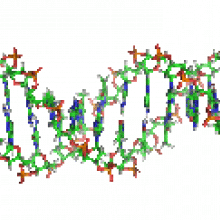
21:15 - Festival Highlights - Biology Zone
Festival Highlights - Biology Zone
with Meera Senthilingam
Kat - Now it's time to hear some highlights from Science Saturday. We sent Meera Senthilingam off to roam around the hands-on activities in the Biology Zones, right in the centre of Cambridge. And here's what she found.
Meera - I've come along to the Pathology Department on the Downing Site and I'm here with Christine Watson who works here in Pathology. Hello Christine.
Christine - Hello.
Meera - What have you got going on in your section?
 Christine - Well, this morning we're showing people how cells make milk. We're very interested in the mammary gland and how that goes wrong in cancer. In order to do that we need to understand normal mammary function. Today we have an exhibit on breast cells and how they make milk. We've lots of interactive exhibits for the kids to look at different animals and how much milk they might make and to look at all of the things in milk: the fats, the proteins and sugars - all of these things.
Christine - Well, this morning we're showing people how cells make milk. We're very interested in the mammary gland and how that goes wrong in cancer. In order to do that we need to understand normal mammary function. Today we have an exhibit on breast cells and how they make milk. We've lots of interactive exhibits for the kids to look at different animals and how much milk they might make and to look at all of the things in milk: the fats, the proteins and sugars - all of these things.
Meera - How are you displaying this, how is it interactive?
Christine - We've lots of posters and we have guess how much milk? We've a Meccano® fats machine here so the kids can put balls in the machine and study how we separate cells to determine the different functions.
Meera - So you have everyone guess how much milk these animals make but I can actually see some milk and cheese down the end there. What's that for?
Christine - We thought it would be really exciting for people to taste different sorts of milk and realise how the flavour is actually made. Some animals make a lot of fat in the milk, some have much more sugar and so we have milk to try here. We've goat's milk and cow's milk and we even have milk from a plant: soya milk which some people drink because they don't like animal milk. There's lots of things to try and taste.
Meera - What are you hoping they'll walk away with having come to this section?
Christine - I hope they'll go away with an understanding of how exciting it is to study science and also to have some idea of how the mammary gland makes milk. Lots of people don't understand how cells make milk.
Meera - How do cells make milk?
Christine - Ah, well during pregnancy very special cells called alveolar cells grow. They make protein and lipid and secrete that into the ducts in the gland. If an infant suckles at the teat they can actually withdraw that milk. These cells all die at the end of lactation when they're not needed any more.
Meera - Is it these cells that go wrong in cancer or is it a variety of cells?
Christine - It's usually these cells that go wrong. If they don't die properly then women can get cancer. In fact, dogs and other animals can get cancer too. We're really very interested in finding out how we can kill these cells if they go wrong.
Meera - So, I've wondered over to the New Museums Site and I'm here with festival patron, Carol Vorderman. Hello, Carol.
Carol - Hello.
Meera - So what have you been doing this morning?
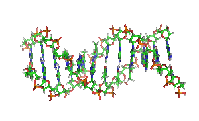 Carol - Well, I was over near Plant Sciences earlier on and seeing lots of people dressed up as bees and then getting lost in a very large yellow flower. Then I was getting my DNA extracted, shaken up in a test tube along with various chemicals.
Carol - Well, I was over near Plant Sciences earlier on and seeing lots of people dressed up as bees and then getting lost in a very large yellow flower. Then I was getting my DNA extracted, shaken up in a test tube along with various chemicals.
Meera - Were you able to take it home with you?
Carol - Yes, you are. You can make it into a little necklace: your own test tube. How fantastic is that? Then I went to see the lecture about the science of Dr Who. Which was, OH MAN it's real!
Meera - I've come over to the Biology Zone and it's really busy. There are hundred of people queuing outside just to come in. There's a whole variety of activities going on. Over in the distance I can see children bashing a machine of some form with quite a lot of force. I'm just going to see what that activity's about. It's the neurone section and I'm here with Isobel who's organising this particular area. Hello Isobel.
Isobel - Hello.
Meera - Why are children bashing that machine over there?
Isobel - Actually, they're trying to get their motor-coordination as better as they can so they're pressing one button to the next one for 45 seconds. We're just recording how much they do. We're using these tests in the clinic. These are used in the diagnostic for patients with Parkinson's disease or Huntington's disease.
Meera - What else have you got going on in this section?
Isobel - Actually, in this section we have building a brain in Playdoh. We try to sensitise people to what is brain science. The idea is to sensitise kids to how complex the brain can be by making them make a brain in ten steps.
 Meera - So the person's that's actually created the build-a-brain section is Dr Lizzie Burns from the University of Oxford. Hello Lizzie.
Meera - So the person's that's actually created the build-a-brain section is Dr Lizzie Burns from the University of Oxford. Hello Lizzie.
Lizzie - Hello.
Meera - What's that section all about?
Lizzie - The idea is to inspire and engage people with the brain which is the most fascinating organ in the body. It's really what makes us who we are. It's everything we experience is happening, all our memories. It's extraordinary to think the strange wrinkled thing is responsible for all those feelings. It's also about trying to appreciate how beautiful it is. The real thing doesn't look very beautiful, it has to be said but it is beautiful in terms of what it does. People are actually able to find out about what's inside their brain. There's loads of things in there as well: what each part does, what would happen if one of those parts wasn't working as well, what effect that would have on the person. I've actually run this sort of workshop for very young children who love it all the way up to leading neuroscientists in their field and they've loved it too. Everyone turns into an instant child, it's wonderful.
Mera - I've come over to the brain section and I'm here with Sam who's currently in the middle of making a brain. Hello Sam.
Sam - Hello.
Meera - So what have you been doing here?
Sam - I've been making a brain. There's this instruction thing and it tells you all the parts of the brain and you have to make them in a certain order and each one's a different colour.
Meera - Which stage are you at now?
Sam - I'm on the last stage.
Meera - Ok, so your brain's nearly there. Actually I can see it. It's very impressive. What have you learned new today?
Sam - I've learned which part controls which bit. The front part which I'm making now controls the personality; the top part controls the movement and touch; sides control vision; and the stem controls your breathing and the heart.
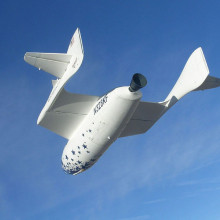
27:38 - Holidays in Space
Holidays in Space
with Duncan Law-Green, Leicester University & Will Whitehall, Virgin Galactic
Earlier this week Meera met up with Duncan Law-Green and Will Whitehall to discuss the future of the tourism industry.
Meera - The mission: my summer holiday. Destination: outer space. Think I'm joking? The way commercial space travel is going, this could soon be a reality. As part of the Cambridge science festival, two Cambridge scientists working in this field came to town to tell us about the possibility that by 2010 regular members of the public - well members of the public with $200,000 to spare - could be spending their annual leave in space. I went along to the event and the first speaker was Duncan Law-Green from the University of Leicester. I spoke to him afterwards and he told me more about the concept of space tourism.
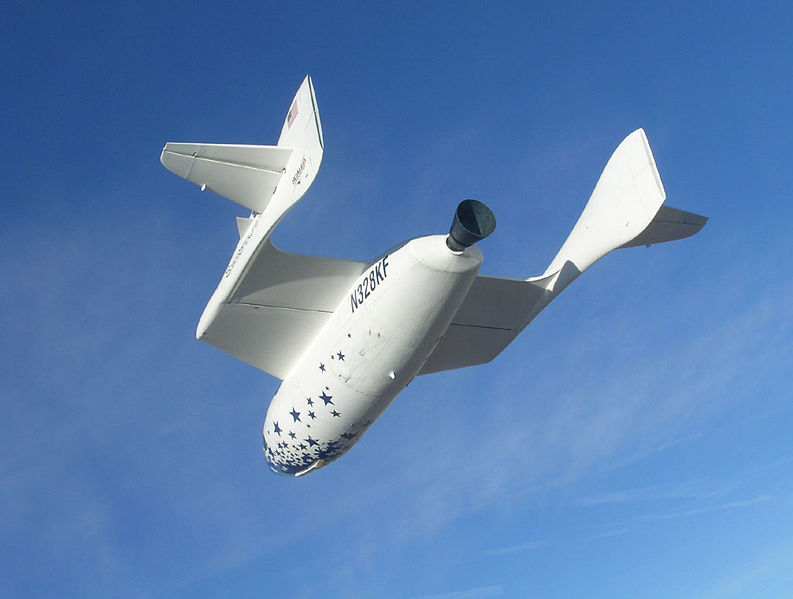 Duncan - Space tourism is developing new and cheaper ways of getting into space. It's reached the point where a large fraction of the population can actually afford to travel into space.
Duncan - Space tourism is developing new and cheaper ways of getting into space. It's reached the point where a large fraction of the population can actually afford to travel into space.
Meera - How many people have done this as tourists to date?
Duncan - To date five have paid in the region of 20-30 million dollars each for Sawyer's trips to the International Space Station.
Meera - What projects are in development at the moment to make this more common and more frequent for people?
Duncan - We can break them into two groups: suborbital and orbital. Suborbital is where the space craft travels sufficiently high to reach the edge of space (100km above the surface of the Earth) but it isn't going sufficiently fast to reach orbit so it's going less than 17,000 miles per hour. The major projects for suborbital are Virgin Galactic, Blue Origin, there's a project by EADS Astrium and there's a small-scale project by Armadillo Aerospace which is owned by John Carmack who developed the Doom and Quake video games.
Meera - What challenges are the designers of these projects facing?
Duncan - Well, the major issue is safety. Current, manned orbital spacecraft have a risk of fatal accident of around 1 in 70 so they want to make it at least 100 times safer than that. This gets you around the level of safety of the first generation of commercial airliners in the 1930s. The challenges there are to have a robust airframe, really safe propulsion systems making sure the rocket engine starts when it should each time and every time where it doesn't detonate or it didn't fail in any way. That's the real challenge.
Meera - Will there be environmental impacts of these changes?
Duncan - There's a number of environmental impacts. You have to consider carbon emissions, carbon footprint, possibility for toxic chemical release because a lot of these rockets may use dangerous chemicals. You need to handle them. Disturbance to nearby wildlife, sonic booms and their effects on the locality, the risk of dropping debris on nearby population. The US environmental protection agency is very careful about that. It makes all the spaceport developers go through a very long process where they have to justify this. They have to account for all the possible risks to make sure the spaceport will be safe and have minimal environmental impact.
Meera - What's the future of this and what further developments will there be?
Duncan - The next step after Spaceship 2 is probably a long-distance suborbital point-to-point vehicle that would take you, say, from London to Sydney in an hour. You'd be flying several thousand miles an hour up above the atmosphere and curve in an arc and come back down at Sydney.
Meera - The ability to view our beautiful Earth from high above and see kangaroos all within an hour. Who could want more? One person who thinks we're capable of even more is Will Whitehall, president of Virgin Galactic. He also spoke at the event and told me more about the aims of his company.
Will - Essentially Virgin Galactic is going to be the operator of a space launch system. Our first operation is going to be taking people into space who've paid up to $200,000 to go. We have a longer-term industrial application which we want to use the space launch system for. We want to be an operator who also carries cargo into space in the future, science experiments into space. We want the ability to use this system which is very low in environmental impact and low cost to launch low Earth orbit satellites as well.
Meera - How are the designs and materials you use better than what's already used? How are they better for the environment?
Will - For a start, they're not metal so they're very, very light. Carbon composite is a very light material so you use very little energy to get it up into the atmosphere. The aircraft we're developing is the world's first really true all-carbon composite plane and it burns hardly any fuel. It can get the spaceship well above the atmosphere to the top of the troposphere, at about 50,000 feet before it even fires a rocket. It then needs a much smaller rocket than it would need from the ground. The rocket itself has benign materials in it: rubber and nitrous oxide so it causes very little environmental impact. As a result of that it's also low-cost. You can pretty much say that anything that costs a lot of money in transportation is using more energy and having a bigger environmental impact. Every time the shuttle takes off, for example, every shuttle launch costs about $750,000,000. There's the same input and output of nearly the whole population of New York for a week. This system is going to have the same environmental impact as a business ticket from London to New York in a normal airplane. It really is a revolutionary in terms of the energy it uses to get into space.
Meera - So how does it fly differently?
Will - One of the things it does in space is instead of trying to re-enter the atmosphere like the shuttle does and fly a flight profile in order to land on the atmosphere, in effect, it changes shape in space into a shuttlecock. It drops in to the atmosphere and then at 50,000 feet changes into a glider and without using any energy at all simply glides down to the airport. It's a very simple system but it's a very unique technology because no one had ever thought of changing the shape in space of the vehicle to allow it to get into the atmosphere more easily.
Meera - How far in space are you going to take people so what will the actual experience involve? The experience in total for people will be about 2:30 hours. They'll fly up to 50,000 feet, they'll be launched by a rocket, they'll go into space, they'll see the beauty of the planet, they'll experience weightlessness, they'll be able to move around in the cabin, they'll then be able to come back into the Earth's atmosphere. They will get a pretty comprehensive experience and about three days training for it before they fly.
Meera - I have to admit, I though the experience might last a bit longer than 2:30 hours. Either way, the notion that we could all one day experience what the astronauts do is truly out of this world.
34:35 - Sonic Screwdrivers, Spiderman and Skateboarding Scientists
Sonic Screwdrivers, Spiderman and Skateboarding Scientists
with Dr Paul Parsons, Dr Johnathan Wood, Dr Basil Singer
Kat - Dr Who's been capturing imagination for decades but is it all just fiction? Dr Paul Parsons thinks not as Ben found out.
Ben - I'm here at the Science festival with Dr Paul Parsons, author of the Science of Dr Who. Is there really any science in Dr Who or is it all fiction?
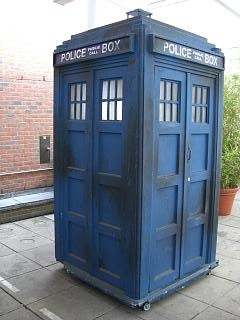 Paul - Actually there's a surprising amount of science in Dr Who not just the obvious topics like regeneration and space flight and things like that. There are actual real science screwdrivers being used in modern factories, There are protective shields for tanks that are being developed that can dissolve projectiles just like the Daleks did back in the first three series. There's all kinds of things going on. I was just staggered when I started ringing up scientists and finding out this kind of thing because I thought it was going to be quite limited, the kinds of stuff that I could talk about. I was literally blown away by how much there is out there.
Paul - Actually there's a surprising amount of science in Dr Who not just the obvious topics like regeneration and space flight and things like that. There are actual real science screwdrivers being used in modern factories, There are protective shields for tanks that are being developed that can dissolve projectiles just like the Daleks did back in the first three series. There's all kinds of things going on. I was just staggered when I started ringing up scientists and finding out this kind of thing because I thought it was going to be quite limited, the kinds of stuff that I could talk about. I was literally blown away by how much there is out there.
Ben - So if we're using sonic screwdrivers now is that a case of art influencing science?
Paul - I don't think they were already in action when they started including them in science fiction. They probably didn't result from science fiction. I think this is just something that people have developed. I say sonic screwdrivers, they're kinda sonic tools. The use sound energy for soldering electrical components in place and that kind of thing. You can use them for cutting fabrics and that sort of stuff, you know. They're little side beams - to make something with as much oomph as the Dr has would be a lot harder. Back in the old series he blows up landmines with the sonic screwdriver from a distance of about 20m. Getting something powerful enough to do that, you'd probably need a nuclear generator which a modern Tom Baker could probably fit in his pockets. Probably a little way to go before you have a real sonic screwdriver like we see in Dr Who. The basic sorts of things are being used, yeah sure.
Ben - Surely the laws of physics don't let us have a thing like the Tardis where it's actually bigger on the inside than it is on the outside.
Paul - It's something you can do in principle actually. There was a guy back in the late 90s came up with a way of arranging this special type of material. He calls it exotic matter because it has negative pressure which means if you blow up your car tyres with the stuff they actually get flatter which is quite bizarre in itself. This chap Chris van-den-Broeck at the University of Cardiff figured out a way of using exotic matter in just the right way that it would actually bend space and time into this bubble which was actually bigger on the inside than it was on the outside. The trouble is you need probably about 10 million billion kg of exotic matter to do this which is about the size of a medium-sized asteroid. It's not something we're going to do anytime soon. It's possible in principle.
Ben - If these things were to be possible what would be the one thing from Dr Who that you would like to see in common use?
Paul - That's interesting...hmmm. Time travel would be good but that's probably maybe a bit obvious, One thing I would like, there was an episode of Dr Who called Nightmare in Eden where there was this machine which was kind of like a virtual safari park where it could capture locations from all around the universe but then project them but project them as a hologram. You could actually go in and walk around. You could visit places virtually, if you like, without having to get on planes and pollute the environment and all that kind of thing. I think I'd have one of them.
Ben - It does sound like a very good way to cut down on your carbon footprint!
Paul - Yes, Dr Who can have the carbon footprint licked. How clever is that!
Ben - Also at the science festival is the editor of materials today, Jonathan Wood. What have geckos, spiders, sharks and daffodils got to do with materials?
Jonathan - Well, I thought that was a good question too but it turns out that all of those things have come up with amazing engineering solutions that we can learn from and make new materials for ourselves. For example, a shark has got dimples on its skin that breaks up the flow of water over its skin, reducing the drag so it uses less energy. Speedo reckons it can make better swimsuits making its swimmers go faster using something similar.
Ben - Should we expect to see Olympic athletes in shark suits?
Jonathan - The all-in-one body suits that make them look so hi-tech now, they are based on what Speedo's learned from sharks. We can argue whether they achieve all that Speedo says or not. Certainly there doesn't appear to be the change in world records that you might have expected if it really worked but it's interesting science nonetheless.
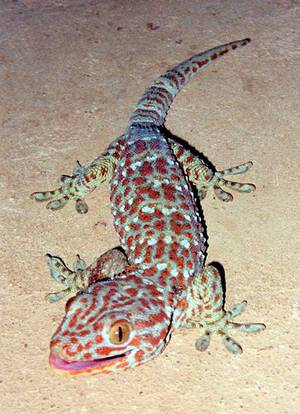 Ben - In Olympic sports it's the tenths of hundredths of a second that make the difference.
Ben - In Olympic sports it's the tenths of hundredths of a second that make the difference.
Jonathan - Absolutely, the tenth of a second is going to mean the difference between a medal. Even if it helps just a little bit, even if you can't quite show it by science, that's going to matter totally to the swimmer.
Ben - With daffodils, they've inspired some beautiful paintings, some poetry but how have they inspired science?
Jonathan - Well, daffodils are interesting. When the wind blows a daffodil doesn't blow over like a tulip might. Instead it twists and turns its head out of the wind. It's got this strength in the stem but it's also inbuilt this type of flexibility that allows it to twist and keep its head up in the wind. We tend to want to do something different when we build something strong. We want it to be stiff. That's an example where nature's done something different because it has different priorities than we do.
Ben - What do geckos have to do with Spiderman?
Jonathan - Geckos are amazing and sticky. They can scurry up the smoothest wall without a second thought. The way they do it is buy having hundreds of thousands of tiny hairs on their toes and these hairs make use of a tiny sticky force called a Van der Waals force. It's tiny on one hair but if you add it up over the hundreds of thousands of hairs it's really sticky. They can cling to walls like Spiderman did but they can hold their weight maybe 50-100 times over. It's a remarkable thing.
Ben - Have we developed the technology based on this effect?
Jonathan - We can now make materials that are hairy much like a gecko's foot. If you create a plastic film with lots of plastic fibres sticking out of it and you make them close enough you can make something stick purely like Van der Waals forces. We're not as good as a gecko yet but we may be able to scale the Empire State Building soon.
Ben - Also at the festival is extreme scientists, Dr Basil Singer.
Basil - Hello. How's it going?
Ben - Very good thank you and you?
Basil - Very well. It's an amazing event this year, you've got so many people here. It's the most packed-out I've ever seen it. Carol Vorderman is on form. What's more, you've got the sight of Dr Who. The queue's really long. I'd love to get in and see it but queue's all the way out the door, around the building and up the block. It's proved to be a massive hit.
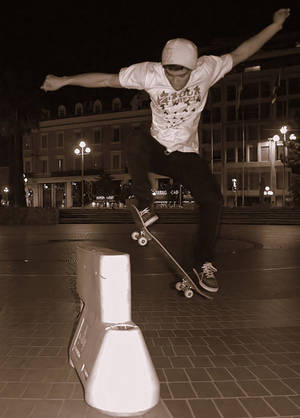 Ben - Well your own show was on the science of extreme sports and that had queues all the way out and down the river. To be honest, it's the only science show I've seen where you had five kids on stage, on skateboards. What inspired you to use skateboards just to demonstrate physics?
Ben - Well your own show was on the science of extreme sports and that had queues all the way out and down the river. To be honest, it's the only science show I've seen where you had five kids on stage, on skateboards. What inspired you to use skateboards just to demonstrate physics?
Basil - Why not? Mechanics essentially can be taught as such a dry subject. It's just the physics of motion. What better way to use analogies than through extreme sports to describe those physics of motions and the dynamics that occur when you're doing some cool sports?
Ben - Do you find that people get distracted by the fact that there are skateboards around or do you think that they take the physics in?
Basil - I like to think that the kids take the physics in. I've talked to parents after the event before and the parents have come up to me and said, 'er I don't think you really got this idea across because I was distracted by that.' And the children say, 'what are you talking about? Angle of momentum - I totally got it! I totally understand moment of inertia now and why I speed up when I bring my hands in when I'm speeding.' The kids just really do, I hope anyway, relate to what I'm saying.
Ben - Other than snowboarding live on stage and bringing your own snow dome what do you think you'll do next? What's the best way to demonstrate physics to kids?
Basil - That's a very good question. I think I'm going to continue doing this physics of extreme sports lecture because it's a great way to explain mechanics. I'd also like to branch out into sound and music. How does sound travel through the air? How do different instruments make those different sounds? I could bring in a guitar and do a massive rock riff. I could bring in my drums and have a mash away at the drum kit. I think that could be really interesting.
Why doesn’t spinning affect dancers?
I think the answer to that is they actually use a special technique when they spinning round. If you watch a dancer who's spinning round very fast they'll flip their head round, very quickly so their head is actually fixing on one point and then flipping round very fast. Is this called spotting? This is what we think it's called. Your head's actually mostly stationary and you're flipping round and focusing on one point so it affects your ear system a bit less.
Why do your fingers wrinkle in the Bath?
This is because of osmosis. What happens is that water will move into your cells. That makes sense of how skin swells up but it doesn't necessarily make sense that your skin's wrinkly. You'll notice when you have a bath you don't get wrinkles all over. You get wrinkles on the soles of your feet, on your hands: especially your fingers.
This is because you have a layer of protective keratin. Keratin's a kind of tough stuff, it's what claws and nails and so on are made of. This means that the skin here is much thicker than elsewhere on your body, and this thick layer is made of dead, keratinised cells. This takes up more water than the thinner skin elsewhere, and so swells up, and goes wrinkly.
----UPDATE-----
In 2013 UK scientists discovered that fingers go wrinkly in water to improve our grip on wet or submerged object. They also showed that it is in fact constricting blood vessels, not osmosis, that drives this change.
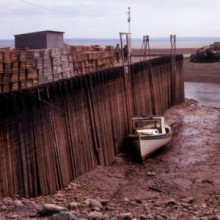
44:47 - Timing the Tides?
Timing the Tides?
Dr Ken George, University of Plymouth, Institute of Marine Studies. I'll answer the question, 'how can one predict tides so precisely?' The answer is they are so dependent upon the Sun, Earth, Moon system which is a system which changes extremely slowly. Namely over tens or even hundreds or millions of years. In a lifetime there is very little change. Therefore the tides are the most predictable natural phenomena on Earth. Indeed, the only thing which is going to stop you predicting tides accurately for let's say a hundred years time is silting or dredging of harbours. You can predict tides years in advance, you can publish tide tables for next year, 2009 and even a decade hence if we so wish. Only about 98% of the energy in the sea level variation is predictable. The bit which is not predictable is caused by storms. People will be very aware of that in the last two days we have had a severe storm striking the south of the UK. In many places the tide rose and the sea level rose, to be more precise, owing to the storm. Why do we need to know tides with such precision? There are two main areas which we are concerned with. One is coastal flooding - how high your tides can bee predicted and the second one is for the passage of ships over shallow water, over shoals. It's very important that they know the height of the tide over a shoal so that they have sufficient clearance under the keel. If they have insufficient clearance then they will scrape the bottom or in the worst case actually go aground and be stuck.
The Bay of Fundy at High TideThe Bay of Fundy at Low Tide
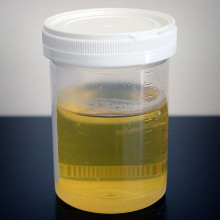
Why is urine hot or warm when you excrete it?
It's been stored in your body which is at "body temperature" of 37℃.
So it's like keeping something in an incubator: it's nice and warm. When it comes out, it's still warm.
And because your skin is cooled by the air, anything at 37 ℃ feels hot against your skin. You'll notice this if you put your hand in some water that is 37 degrees, it doesn't feel the same. It feels warmer than blood heat.
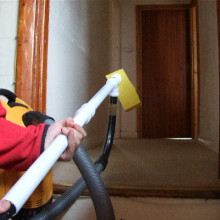










Comments
Add a comment